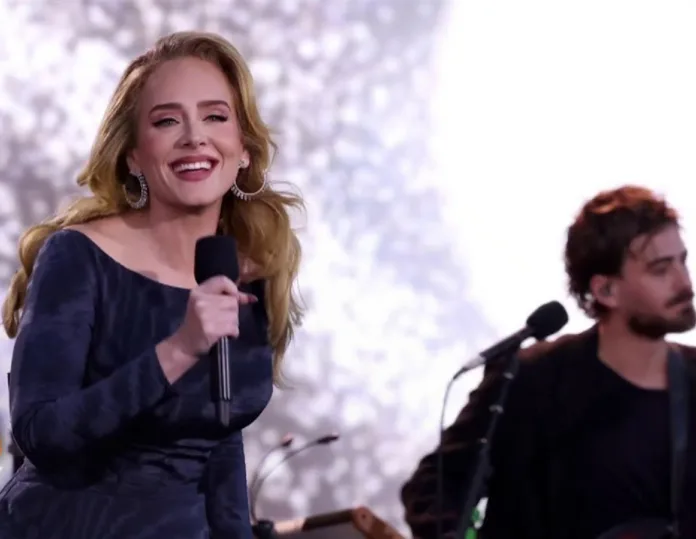Adele’s announcement of a lengthy hiatus raises questions about the future of iconic female singers, as the era of the grand diva seems to be fading
Adele‘s recent announcement that she will be taking a significant break from music after her final Las Vegas show on November 23 has sparked discussions about the future of the pop diva. Her statement, made during a performance in Munich, suggested that fans might not see her again for an “incredibly long time.” This news underscores a broader trend: the diminishing presence of the classic diva—characterized by powerful vocals, dramatic personas, and extravagant performances.
In the past, the music scene was dominated by larger-than-life female singers with commanding voices. Icons like Aretha Franklin, Barbra Streisand, Cher, Whitney Houston, and Mariah Carey were known for their vocal prowess and grand stage presence. Adele, with her big hair, dramatic gowns, and powerhouse vocals, belongs to this tradition. However, recent years have seen a shift away from this archetype. The current chart-toppers include artists like Charli XCX, Sabrina Carpenter, and Taylor Swift, who, despite their success, do not embody the classic diva persona.
This shift reflects changing public attitudes toward female vocal styles. DJ Louie XIV, host of the Pop Pantheon podcast, notes that the past decade has seen a significant decline in the popularity of big, dramatic vocals. Many contemporary artists, such as Billie Eilish and Ariana Grande, focus more on rhythmic and personal expression rather than showcasing vocal range. Grande, once known for her Mariah Carey-like vocal abilities, has adapted her style to fit modern trends, emphasizing rhythm over vocal virtuosity.
The rise of TV talent shows like The X Factor and American Idol has also influenced the perception of vocal talent. These shows popularized the idea that exceptional vocal skills could come from ordinary people, diminishing the mystique of the diva. The democratization of music through platforms like social media has further shifted audience preferences towards authenticity and relatability rather than the unattainable glamour of past divas.
Despite the current trend, the music industry has not completely abandoned the diva. Recent events suggest a cyclical nature in pop music. Mariah Carey, for example, reinvented herself in the late 90s by blending pop and hip-hop. Cher’s use of Auto-Tune in her 1998 hit “Believe” and Beyoncé’s genre-crossing albums demonstrate that the diva’s spirit can adapt and evolve. Celine Dion’s highly anticipated comeback performance at the Paris Olympics opening ceremony further highlights the ongoing interest in diva performances.
The history of pop music is full of comebacks and reinventions, proving that the diva’s essence may endure despite changing trends. The future of the diva might involve a fusion of classic vocal elements with modern, hyper-personal songwriting. Artists like Lady Gaga, who blends powerful vocals with contemporary styles, or collaborative projects like those between Gaga and Bruno Mars, illustrate potential new directions for the diva archetype.
Analysis:
Political: The decline of the traditional pop diva reflects broader political and cultural shifts within the music industry. The transition from grand, show-stopping performances to more intimate, relatable styles mirrors a shift in societal values towards authenticity and accessibility. This change may influence how female artists are supported and promoted, with a focus on their personal stories and relatability rather than their adherence to traditional diva characteristics. The evolving role of female artists in the industry can also be seen as part of a larger movement towards gender equality and the redefinition of success and talent.
Social: The fading prominence of the classic diva highlights changing social attitudes towards celebrity and entertainment. The rise of social media and reality TV has fostered a culture where accessibility and authenticity are prized over traditional glamour and mystique. This shift reflects broader societal trends where audiences value personal connection and relatability. The success of artists like Charli XCX and Taylor Swift, who emphasize personal narratives and self-awareness, represents a departure from the unattainable perfection of past divas. This evolution in pop culture underscores the changing expectations of celebrities and their relationship with their audiences.
Racial: The discussion about the decline of the diva also intersects with racial dynamics in the music industry. Historically, divas like Aretha Franklin and Whitney Houston, who made significant contributions to music, were often subject to racial stereotyping and limitations imposed by the industry. The contemporary music scene’s move away from the diva archetype may also reflect changing attitudes towards race and representation. The industry’s current focus on diverse and authentic expressions of identity could be contributing to the shift away from the traditional diva model, highlighting the need for broader representation and inclusivity in pop music.
Gender: The changing landscape of pop music reflects gendered expectations and challenges for female artists. The traditional diva, characterized by grandiosity and vocal prowess, often faced scrutiny for not conforming to conventional feminine norms. The current trend towards more subdued, relatable pop stars reflects a broader cultural shift towards valuing authenticity over the extravagant personas of past female singers. This shift can also be seen as part of a broader gendered double standard in the industry, where female artists are often required to constantly reinvent themselves to remain relevant, while their male counterparts face fewer such pressures.
Economic: The decline of the traditional diva and the rise of more relatable pop stars also have economic implications for the music industry. The industry’s focus on social media and streaming platforms has shifted the market towards artists who can generate buzz and maintain engagement through personal branding and authenticity. This trend has influenced how record labels and music executives invest in and promote artists. The industry’s fear of anything perceived as old-fashioned may discourage investment in the development of new divas, instead favouring artists who align with current consumer preferences and digital marketing strategies. This economic shift reflects the broader commercial pressures facing the music industry as it adapts to changing technologies and audience behaviours.
